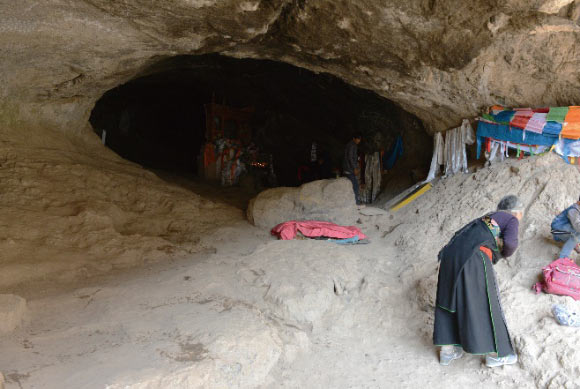In 1980, the 160,000-year-old fossilized partial jawbone of a Denisovan — the so-called Xiahe mandible — was found in Baishiya Karst Cave, a limestone cave at the northeast margin of the Tibetan Plateau. Now, an international team of researchers has extracted genetic material from the sediments in Baishiya Karst Cave and identified mitochondrial DNA (mtDNA) from Denisovans indicating their presence at about 100,000 years ago, 60,000 years ago, and possibly 45,000 years ago. This discovery is the first time Denisovan DNA has been recovered from a location that is outside Denisova Cave in Siberia.
In 2019, the Xiahe mandible from Baishiya Karst Cave — dated to at least 160,000 years ago — was identified to be of Denisovan origin.
However, this identification of the fossil as Denisovan is based on a single amino acid position and is therefore tenuous.
In the new study, a team of scientists from China, Australia, Germany, and the United States found evidence for the long-term presence of Denisovans in Baishiya Karst Cave and described stratigraphic and chronological context for their occupation in the cave.
“We’ve barely scratched the surface — three small excavation units have yielded hundreds of stone tools, fauna and ancient DNA. There’s a lot that remains to be done.”

The entrance of the Baishiya Karst Cave.
Dr. Perreault and colleagues extracted genetic material from Baishiya Karst Cave sediments and identified Denisovan mtDNA within them.
The findings indicate that Denisovans occupied the high-altitude cave as early as 100,000 years ago, and possibly as recently as 45,000 years ago, as well as at a point in-between.
“Finding Denisovan DNA on the Tibetan Plateau itself is surprising. Evidence of archaic hominins 2,000 m above sea level is unusual,” they said.
“Life this high on the plateau is harsh for many reasons, including its thin air, and humans can develop altitude sickness anywhere above 2,500 m above sea level.”
“This suggests that the Denisovans may have evolved adaptations to high altitude, much like modern Tibetans.”
“The dates of the sediments with mtDNA, along with the older Xiahe mandible, suggest that the Denisovans have been on the Plateau perhaps continuously for tens of thousands of years — more than enough for genetic adaptations to emerge.”
The Denisovan fossil and their mtDNA from Baishiya Karst Cave indicate that early modern humans coexisted in Asia with other archaic hominins, but, unexpectedly, that they interbred with them.
http://www.sci-news.com/othersciences/anthropology/denisovan-mitochondrial-dna-baishiya-karst-cave-09010.html